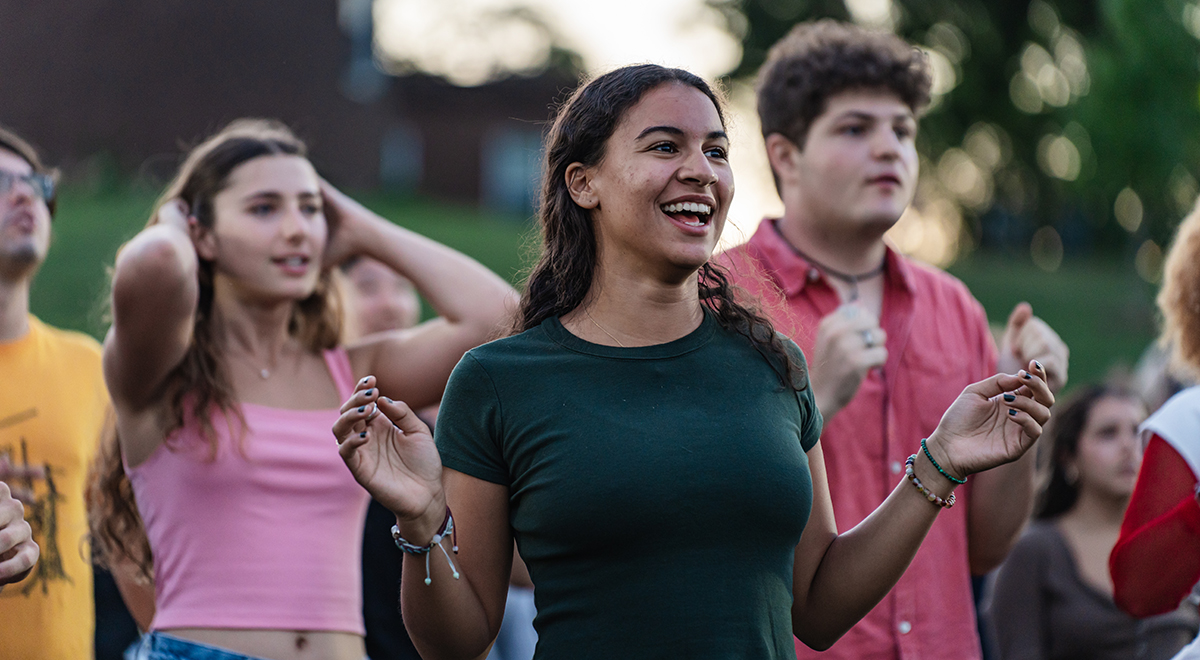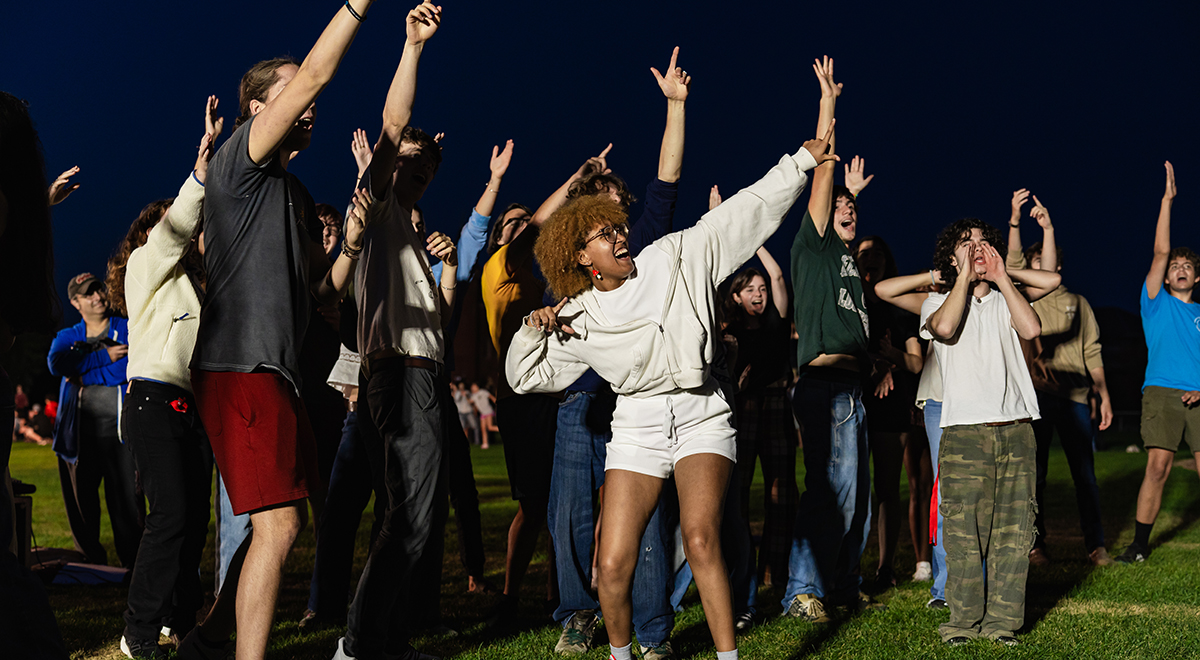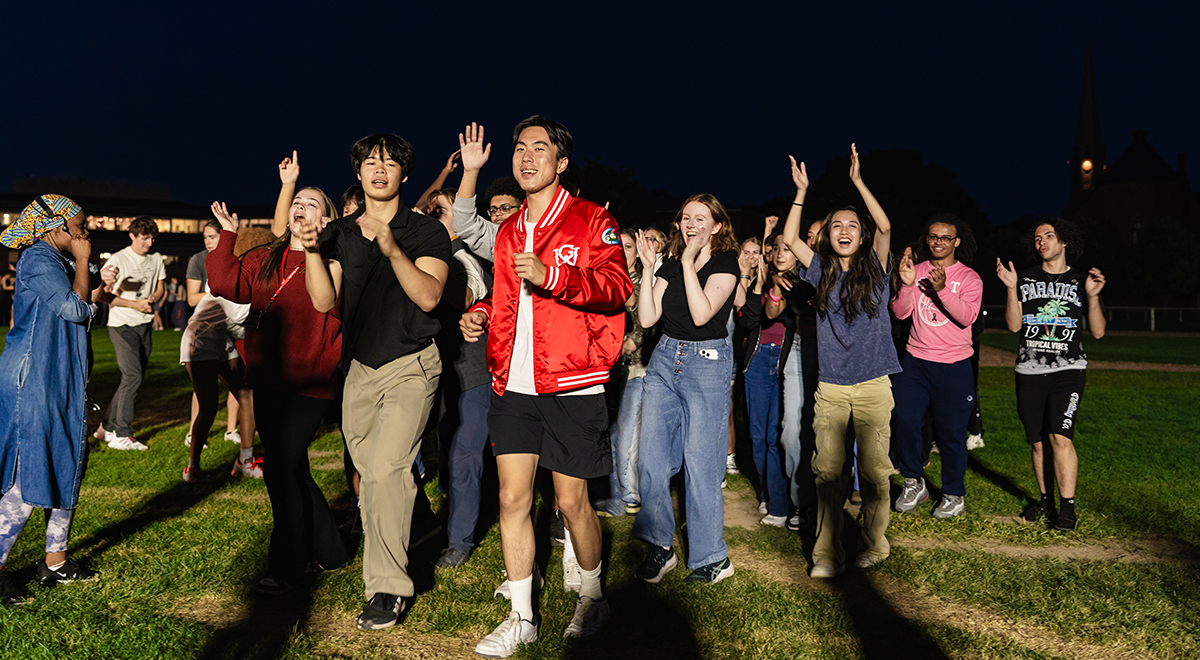‘Common Moment’ Tradition Connects New Students Across Difference
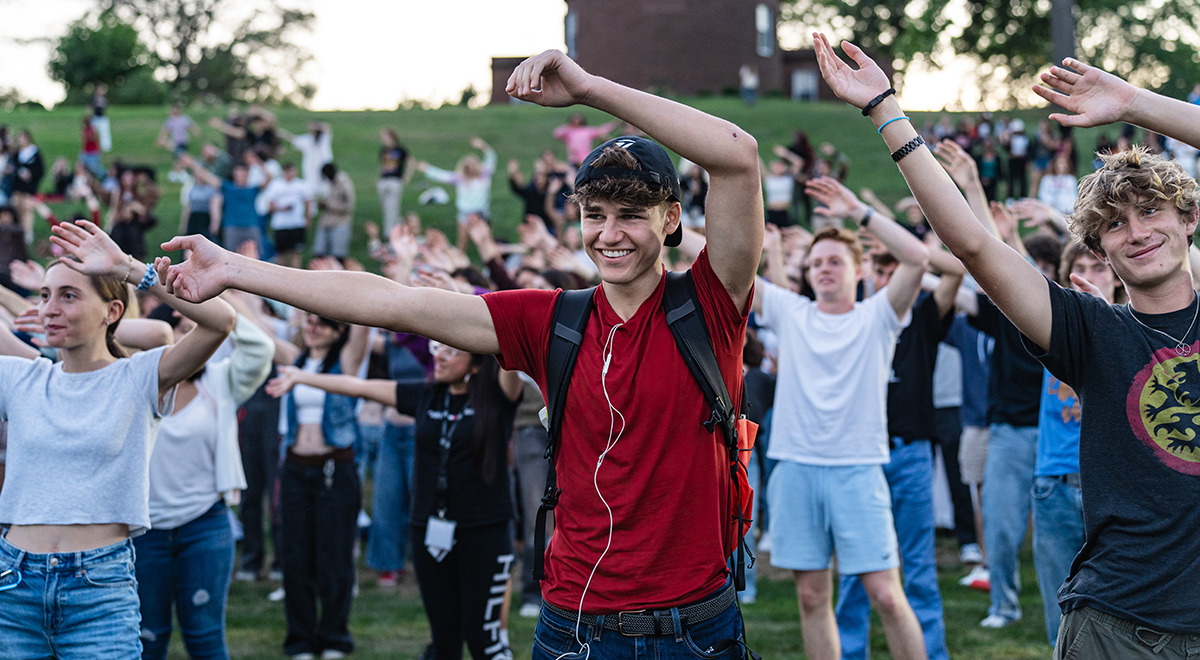
The Class of 2028 gathered on Andrus Field for a joyful celebration on Aug. 30. More than 600 first-year students took part in the 17th annual “Common Moment” as part of new student orientation. The celebration also included new transfer students from both the Class of 2027 and the Class of 2026.
Joshua Lubin-Levy 06, director of the Center for the Arts, said the “Common Moment” is an opportunity during orientation for new students to get out of their heads and into their bodies, feeling and sensing the world around them through dance as they reflect on the kind of community they want to create and be a part of during their time at Wesleyan.
“That sense that we can learn with, trust in, and build community through embodied practice is so essential to finding ways to connect across our difference,” Lubin-Levy said.
Over the course of 90 minutes, four faculty members from the Dance Department gave the students an opportunity to first learn the eclectic and diverse world dance traditions taught at Wesleyan, and then to have fun performing those energetic dances for their peers.
Provost and Senior Vice President for Academic Affairs Nicole Stanton — who is also professor of Dance, African American Studies, and Environmental Studies — welcomed the students and thanked the faculty and staff that produce the event: “At Wesleyan, we believe in the power of the arts as a way of knowing the world, a way of understanding the world, and a way of changing the world,” Stanton said. “In dance we practice how to be in community with each other with folks that come from different places, have different experiences, and different perspectives, and we work together to create something magical.”
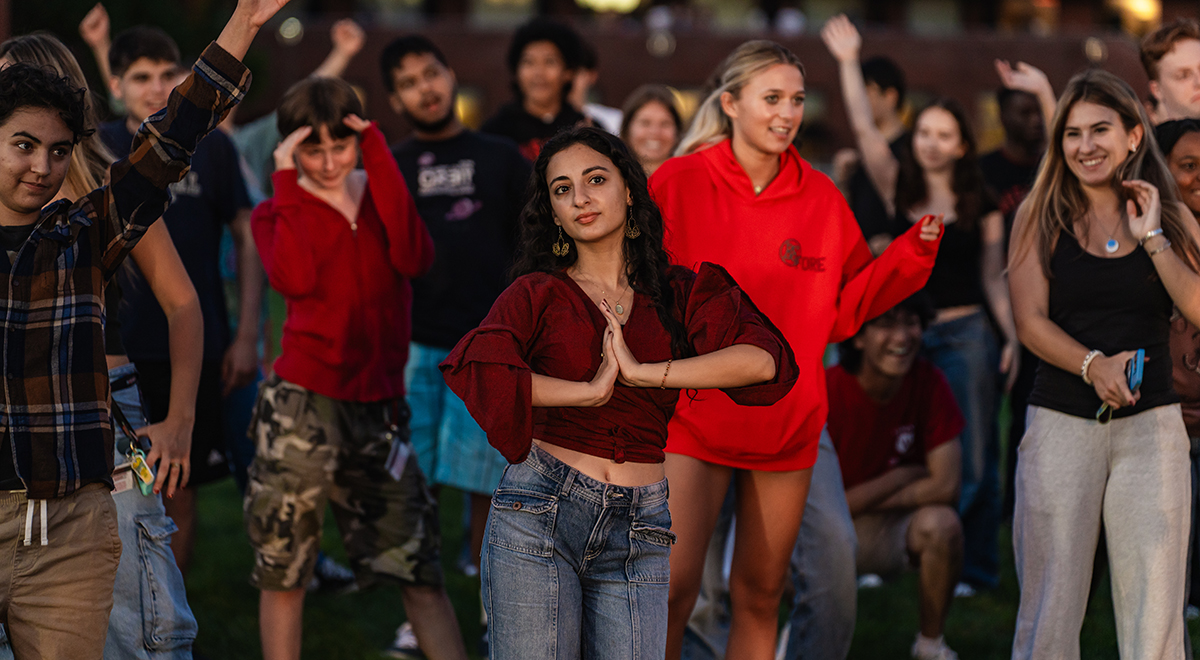
Stanton also highlighted Wesleyan’s partnership with Brooklyn, New York-based Urban Bush Women. The company has harnessed the power of dance to build community and transform the world since 1984. Urban Bush Women are part of the University’s Embodying Antiracism Initiative launched in 2021.
Two facilitators from Urban Bush Women were on campus for the second year of the group’s collaboration during the “Common Moment.” Jaimé Yawa Dzandu and Tendayi Kuumba taught choreography from an excerpt of “Hair and Other Stories,” an Urban Bush Women dance-theater work set to music by The Illustrious Blacks. The excerpt explored and put into motion the students’ definitions of liberation through movement and voices. “The ‘Common Moment’ was amazing,” Dzandu said of the event. “It is such a special way to kick off a new chapter forward with the Wesleyan University Class of 2028.”
“It’s a beautiful reminder of the connectors of dance,” Kuumba said of her second time leading groups of students through Urban Bush Women movements. “It’s very precious. These moments they share together can be memories that they’ll keep forever.”
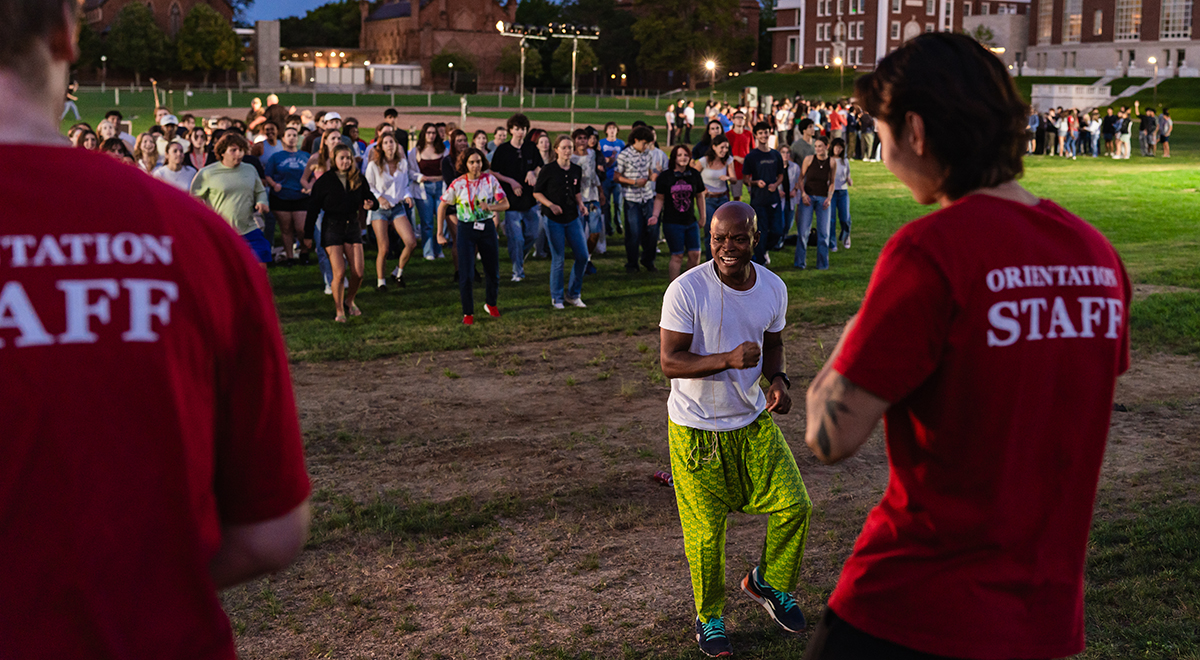
Associate Professor of Dance Iddi Saaka, who has helped shape the gathering since 2008, led a brief warm up set to Ghanaian music by Kofi Kinaata before students were split into five groups by birthday month. The groups had 25 minutes to learn a three-minute dance, which they would then perform for each other.
For her fourth “Common Moment,” Assistant Professor of the Practice in Dance and African American Studies Joya Powell taught Pagode choreography, a dance rooted in the Afro-Brazilian samba style, set to a song by Filhos de Jorge.
“I love and appreciate the uplifting community-centered approach of these dance techniques,” Powell said. “Through the Africanist aesthetic of call and response, they offer space for both performers and witnesses to engage in the lively movements.” Powell’s class this semester, “Perspectives in Dance as Culture,” focuses on dance of the African diaspora and the practice of Black artists.
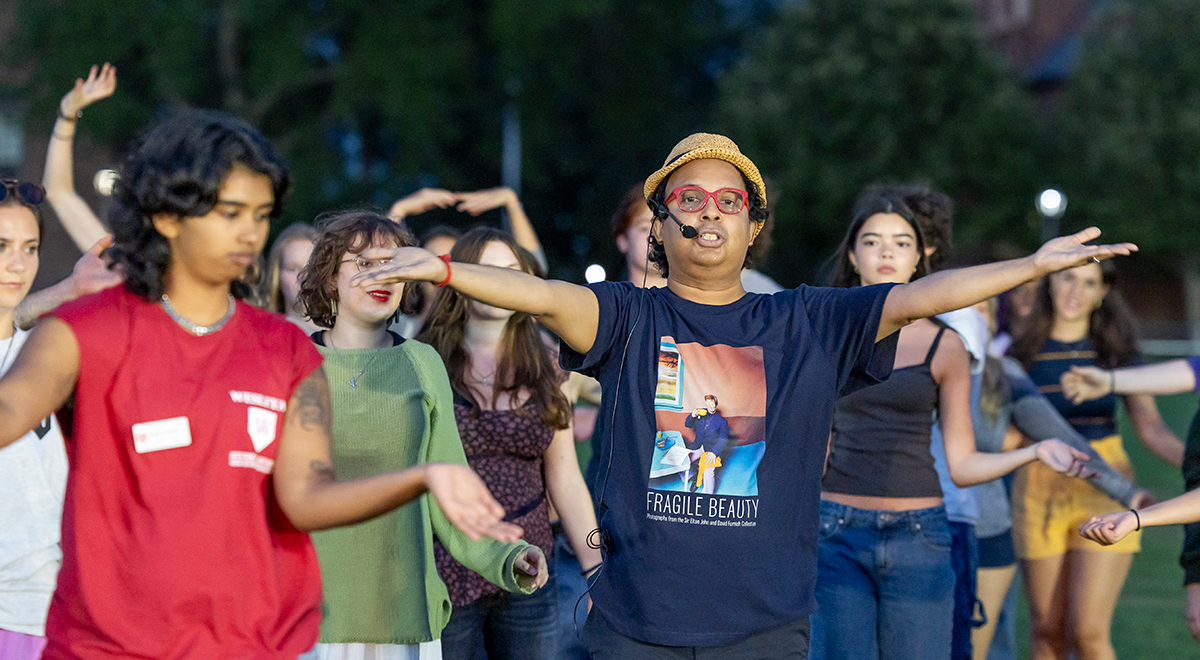
Professor of Dance, Global South Asian Studies, and Feminist, Gender, and Sexuality Studies Hari Krishnan, who started choreographing at the event in 2018, led students in an exuberant global dance aesthetic set to a song from the Bollywood film “Happy New Year.” This semester, Krishnan is teaching “Bharata Natyam,” an introduction to South Indian classical dance, and “Queering the Dancing Body: Critical Perspectives on LGBTQ Representation.” His company inDANCE, which includes Visiting Assistant Professor of Dance Eury German ’16 and Spenser Stroud ’22, will premiere Krishnan’s new work “ROWDIES IN LOVE” on Dec. 6 and 7 in the CFA Theater.
University Professor of Dance Patricia Beaman returned for a third year, teaching students the 1975 disco line dance “The Hustle.” “For me, one of the greatest joys about dancing is the sense of community it fosters, and to move in unison is a sublime way of achieving that,” Beaman said.
This semester, Beaman teaches a ballet course, and “Repertory and Performance,” in which students will rehearse and perform her new dance-drama The Jewel Thief, set to music by John Spencer Camp Professor of Music Neely Bruce, on Dec. 6 and 7.
Saaka taught his short choreography from a Ghanaian recreational dance known as “Kpatsa.” The piece emphasizes the intricate connection between movement and live drumming, and the key roles of repetition and polyrhythm (the simultaneous combination of contrasting rhythms). This fall, Saaka is teaching West African dance and “Introduction to Dance” courses.
